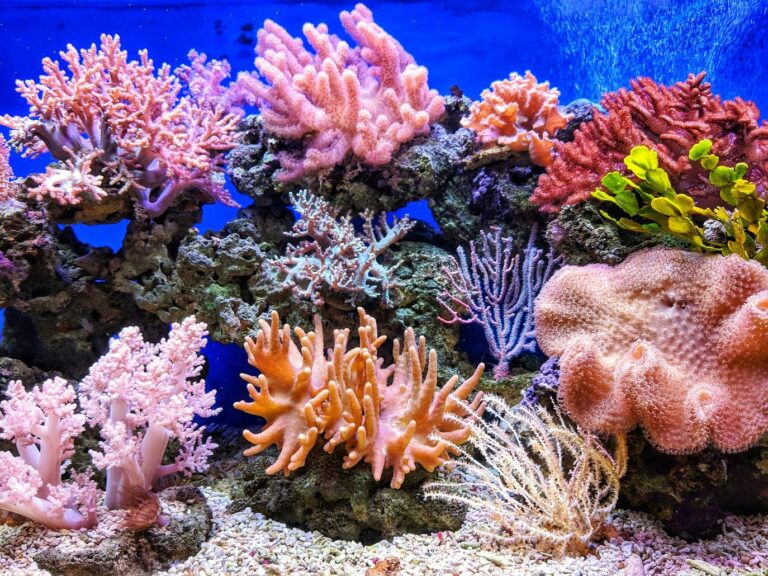As an online entrepreneur, your daily choices significantly impact the environment. Integrating green habits into your business practices not only helps the earth but also resonates with your values of well-being and sustainable living.
Adopting sustainable practices in your online business is a meaningful way to contribute to a healthier planet. Embracing eco-friendly habits enhances your lifestyle and inspires your audience to prioritize sustainability. Making small changes can lead to a bigger impact, benefiting both your business and the environment.
1.Promote Sustainability in Your Brand
Integrating sustainability into your brand is crucial for connecting with today’s consumers. They are increasingly interested in ethical and environmental values. Start by highlighting eco-friendly practices in your branding. Everything from your product sourcing to the packaging you use can reflect this.
Communicate your commitment to the environment through your online marketing efforts. Share stories about your sustainable initiatives and the positive impact they have on the planet. This approach not only enhances your brand image but also builds trust with your audience.
Consider collaborating with other eco-conscious brands. Partnerships can amplify your message and reach like-minded consumers who prioritize sustainability in their purchasing decisions. You can significantly grow your brand and create lasting relationships with your consumers by fostering a community around green practices.
2.Choose Energy-Efficient Tech
Selecting energy-efficient technology plays a significant role in reducing your business’s carbon footprint. When purchasing new devices, look for energy ratings that guarantee lower electricity consumption. Choose energy-efficient equipment like laptops with extended battery life or LED monitors.
Using this kind of tech conserves energy and reduces utility bills. Consider using smart plugs and power strips that automatically turn off devices when not in use. These tools ensure you’re not consuming unnecessary power during downtime.
Regularly maintaining your tech also contributes to energy efficiency. Simple practices like cleaning vents or updating software can enhance performance and reduce energy use. Making these conscious choices supports both your business and the planet.

3.Optimize Your Work Environment
Creating a work environment that supports both productivity and sustainability can enhance your daily routine. Start by adding natural light and plants to your workspace. These elements not only improve your mood but also purify the air.
Consider furniture made from sustainable materials. Opt for desks and chairs crafted from bamboo or reclaimed wood. These materials are durable and eco-friendly, serving as a reminder of your commitment to green habits.
Minimize energy consumption by using energy-efficient LED lighting and unplugging devices when not in use. This small change can make a significant impact on reducing your carbon footprint.
Organize your digital workspace for efficiency. Use cloud storage to reduce paper waste and ensure your files are backed up safely. Keep digital clutter at bay to maintain focus.
Also add personal touches that inspire you, like artwork or calming scents. These elements can help create a calming workspace that reflects your values and goals.
4.Go Paperless
Transitioning to a paperless approach can significantly reduce your environmental footprint. Choosing digital over physical documents conserves resources such as trees and water. This shift not only benefits the planet but also streamlines your workflow, making document management more efficient.
Secure and organize your files using cloud storage solutions. Digital tools allow easy access to and sharing of documents from any location. With features like automatic backups, your important files are protected against loss or damage. You’ll find retrieving specific documents faster and more convenient than sifting through stacks of paper.
Opt for electronic signatures and online billing systems. This switch eliminates the need for printed contracts and invoices. Embracing these digital alternatives helps you maintain a clutter-free work environment while also contributing to reducing waste. Making these changes can be a simple yet impactful step toward a more sustainable and organized work process.

5.Leverage Green Hosting Services
Switching to green hosting services is an impactful way to reduce your digital carbon footprint. Choosing providers that prioritize renewable energy helps reduce the environmental impact of running websites.
Green hosting companies utilize sustainable practices, such as carbon offsetting and using energy-efficient servers. This ensures that your online presence supports the planet.
Look for hosting services that are transparent about their energy sources. Some companies invest in wind or solar energy, actively contributing to a healthier environment. Your choice can inspire others to follow suit.
Supporting companies that are committed to sustainability positively impacts the ecosystem. It’s a small step that aligns with broader environmental goals.
Switching to green hosting can be seamless and cost-effective. Many providers offer competitive pricing without compromising on performance or reliability. Making this choice contributes to a more sustainable future.
6.Work Remotely or Hybrid
Transitioning to remote or hybrid work can significantly reduce your carbon footprint. Eliminating the daily commute directly reduces carbon emissions from driving or using public transportation. Not only does this benefit the environment, but it also allows you more time to spend on activities that support your health and well-being.
Setting up a home office also gives you greater control over your work environment. You can choose energy-efficient devices and sustainable materials to furnish your workspace. This conscious approach supports a greener lifestyle and aligns with your values of wellness and sustainability.
Working remotely often promotes a more mindful daily routine. You have the flexibility to include activities that enhance your well-being, like yoga breaks or a home-cooked, nutritious meal. This balance between work and personal life can contribute to a healthier, more satisfying lifestyle.

7.Reduce and Recycle E-Waste
Your digital devices, when they break or become obsolete, shouldn’t end up in a landfill. Properly handling e-waste protects both the planet and your health. Start by assessing the items you no longer use and consider donating or selling functional electronics.
For broken or outdated gadgets, look for e-waste recycling programs in your area. Many electronic retailers offer recycling services, allowing you to drop off old devices safely. Some even provide incentives like discounts for recycling.
When purchasing new electronics, consider products made from recycled materials. These choices help reduce the demand for raw materials and decrease electronic waste. Being mindful of your e-waste contributes positively to sustainable living.
Even small actions like repurposing or refurbishing old tech can have a significant impact. Making conscious decisions about your electronic devices can inspire others in your community to follow suit. It’s more than a habit; it’s a step toward a healthier planet.
8.Support Digital Collaboration Tools
Using digital collaboration tools in your workflow can significantly enhance productivity and sustainability. Using these tools reduces the need for physical meetings, cutting down on travel and paper usage. This shift to digital helps minimize your carbon footprint while maintaining the efficiency of team communication.
Tools like Slack, Zoom, and Trello facilitate seamless interaction across distances. These platforms enable instant messaging, video calls, and task management, allowing your team to remain connected without the environmental costs of traditional methods. Supporting these tools promotes a flexible, eco-friendly workspace.
Moreover, digital collaboration tools often integrate with other applications, streamlining operations. Features like file sharing and real-time editing reduce dependency on printed documents. This not only supports sustainability but also helps maintain organized workflows.
Make sure your team is well-versed in these tools to fully leverage their potential. Providing training and resources encourages everyone to adopt new, sustainable practices. Embracing these habits can contribute to a greener planet while fostering a collaborative and efficient work environment.

9.Adopt Minimalist Business Practices
Embracing minimalist business practices can align your work with sustainable values. Simplifying your operations reduces waste and creates space for more meaningful work. Your focus should be on what truly adds value rather than overloading on unnecessary tools or services.
Evaluate your resources carefully. Limit excess by opting for digital solutions that meet multiple needs and reduce reliance on physical materials. This approach not only benefits the environment but also fosters clarity in your work.
Choose quality over quantity. Select tools and services that offer real impact and longevity rather than opting for quick fixes. This mindset helps in building a reliable business foundation with sustainable growth.
Reassess your priorities frequently to eliminate clutter from your daily operations. A minimalist approach encourages intentional decision-making, guiding you to focus better on what matters most.
Adopt practices that encourage mindfulness and responsibility in your business journey. This not only helps you achieve efficiency and productivity but also has a positive impact on your well-being. Minimalism in business can thus align perfectly with a lifestyle focused on simplicity and sustainability.
10.Offset Carbon Emissions
As an online entrepreneur, you can play a vital role in inspiring positive environmental change. One impactful way to contribute is by offsetting your carbon emissions. This practice involves investing in projects designed to reduce carbon levels, such as reforestation or renewable energy initiatives.
Start by calculating your business’s carbon footprint to identify your emissions. Use online tools to determine how much you need to offset. This helps you set clear goals and track progress over time.
Once you’ve identified your carbon footprint, choose credible providers offering carbon offset programs. Look for projects that align with your values, whether it’s supporting local wind farms or restoring wildlife habitats. This ensures your contributions make a meaningful impact.
Adding carbon offsetting to your business benefits the environment and reinforces a health-focused brand image. It shows your commitment to sustainability, which can resonate with your audience. You are not just selling products but fostering a healthier planet for future generations.

Conclusion: Embracing Green Practices for a Sustainable Business Future
Incorporating eco-friendly habits into your online business is not just a trend; it is a necessity for a sustainable future. As online entrepreneurs, the choices we make daily can significantly influence the environment. By adopting the ten green habits outlined in this article, you can effectively reduce your carbon footprint while strengthening your brand’s commitment to sustainability.
Promoting sustainability through your brand, utilizing energy-efficient technology, and creating an optimized work environment are essential steps toward responsible entrepreneurship. You can further enhance your operational efficiency and reduce waste by combining a paperless approach with green hosting services and remote work.
Additionally, prioritizing e-waste recycling, utilizing digital collaboration tools, embracing minimalist business practices, and investing in carbon offset programs can solidify your role as a leader in sustainable business practices. These actions not only resonate with your values but also inspire your audience to follow suit.
Ultimately, integrating these eco-friendly strategies will benefit not only your business health but also contribute positively to the well-being of our planet. Take the first step today—making small, intentional changes can lead to a more sustainable and successful future for you and your community.




